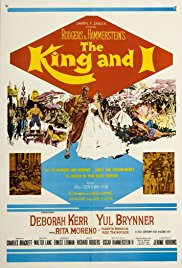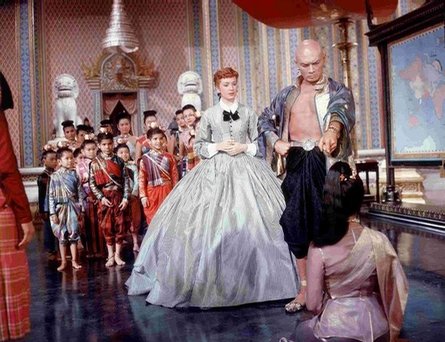1. See Discussion Questions for Use With any Film that is a Work of Fiction.
2. What are some of the possible routes that Anna’s ship might have taken to get from England to Siam?
3. Why did the King’s Prime Minister dislike Anna?
4. Who was Queen Victoria and why was her good opinion important to King Mongkut?
5. Why did Anna have to give advice to the King by “guessing” what he was thinking?
6. Do you think that Anna caused the King’s death by setting up a conflict within him between the modern/Western ways and the old ways? How did the real King Mongkut die?
7. The King sings:
When I was a boy, world was better spot;
What was so was so, what was not was not;
Now I am a man, world has changed a lot;
Some things nearly so; some things nearly not;
Was the world really better when the King was a boy? What had changed?
8. How does the character of the King use the term “scientific”? Is he using it correctly? What does he mean by it?
9. Can you tell the story of “The Small House of Uncle Thomas,” the dance shown in the movie? What do you think of dancing that tells a story?
10. Why did the King tell Anna, “Your Moses shall have been a fool”?
11. Why did the King dislike “The Small House of Uncle Thomas”?
12. What biblical story gave Tuptim the idea to add a scene in “The Small House of Uncle Thomas” in which the ice on the river melted just in time to drown Simon of Legree?
13. What changes did the Crown Prince make as his father was dying? Why?
14. Why was it important to the King that he not be regarded as a barbarian by the English?
15. Do you agree with the King that forks are a foolhardy utensil and that chopsticks are much better? If you were used to eating with chopsticks and unused to forks, would you have the same answer?



